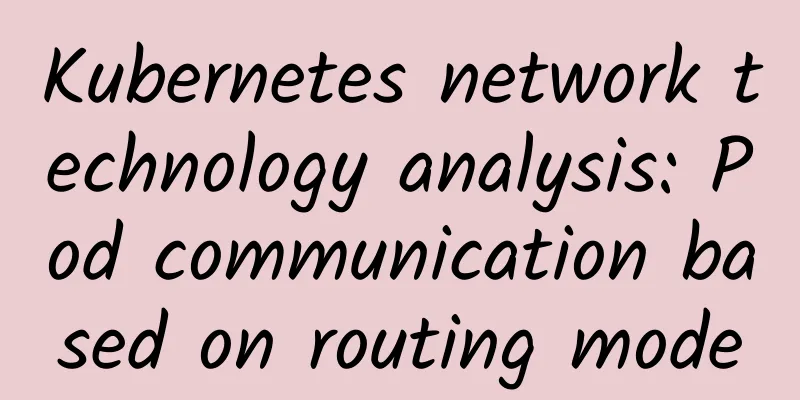The 5G Spring Festival Gala is coming, but who will ensure its security?

|
The Chinese New Year is getting closer and closer, and the Spring Festival Gala, which is a must-have for the Chinese New Year, is also being intensively prepared. As we all know, at the Shenzhen venue this year, 5G network transmission of 4K ultra-high-definition content will be historically realized! This is the first 5G network 4K transmission in my country. Although this is good news brought by 5G, we have to raise such a question: "Is 5G really safe?"
In the scenario of connecting everything built by 5G+IoT, people and things, people and things, and things and things will all be connected at high speed through 5G networks, which also gives hackers and malicious codes more attack opportunities, bringing fatal impacts on mobile office security, sensitive data, and even national infrastructure. Therefore, eliminating security risk concerns under 5G networks is of particular significance for the rapid development of the era of the Internet of Everything. The impact of 5G As 5G becomes more widely used, several things will happen in the future:
Examples of 5G and IoT For example, enhanced communication services in connected cars will go far beyond the set of interactions that already exist in in-car IoT devices such as brakes, environmental monitors, GPS, and even entertainment systems. Real-time connections between drivers and businesses enable financial transactions such as paying for fuel, ordering food at a drive-through restaurant, or paying tolls. Infrastructure-based IoT communications will enhance traffic management and enable features such as autonomous highway driving. Likewise, there are significant implications for healthcare and the medical Internet of Things. 5G speeds will enable real-time data transmission, supporting remote surgery, tracking of other connected medical devices (including wearable medical IoT), and analysis of tests and scans by remote professionals. These advances will not only allow patients to access the best doctors in the world, but will also extend medical care to remote areas where medical resources are scarce. Security implications for 5G and IoT These new connected environments also have serious consequences for security. The biggest challenge is the exponential growth of cyberattacks due to the rapid expansion of IoT devices and edge-based computing, followed by the fact that these devices are not necessarily connected to a central network and are not convenient for centralized management. With billions of IoT devices interconnected in a mesh edge environment, any device can become the weakest link in the security chain and put the entire enterprise at risk. To meet this challenge, we need to think about some fundamental changes in how networks and security are approached.
Although these are just a few of the security risks brought about by the adoption and deployment of 5G networks, this is the beginning of a new era of networks. Security also needs to address the following scenarios:
Where to Start Many organizations clearly underestimate the potential impact of the 5G revolution and the role it will play in the next round of the digital economy. However, there are several things organizations can do now to prepare. The most effective way is to transition traditional, isolated point defense products to an integrated, automated and open security fabric using open APIs and common standards. This approach also requires combining single-pane management and control with security technology that can be applied across multiple environments such as traditional networks, SD-WAN, multi-cloud, highly mobile endpoints and IoT devices for consistent visibility and control. |
<<: Ten questions about the issuance of 5G temporary licenses: how far is 5G?
>>: A brief discussion on the application and suggestions of IPv6 in enterprise transformation
Recommend
iWebFusion: Los Angeles VPS starting at $9.38 per month, 4GB memory package, upgradeable to 10G bandwidth
iWebFusion (or iWFHosting) is a long-established ...
Six predictions for the 5G market in 2020
2019 is the first year of 5G worldwide. More than...
Juniper Networks combines Mist AI with Intelligent Session SD-WAN and SRX secure branch gateways to deliver the best user experience from client to cloud
As a leader in providing AI-driven secure network...
RAKsmart Double 11: San Jose servers start at $30, new users get $10 for registration, 1-10Gbps unlimited traffic servers
RAKsmart is an early-established foreign hosting ...
5G will greatly accelerate the marginalization of the industry
Many see 5G wireless technology as the next wave ...
Double 11 Carnival, drink this bowl of "traffic control" soup
[[350322]] As the Double 11 shopping festival app...
Although there are nearly 100 5G terminals, they are not even the tip of the iceberg.
The quantity, quality and speed of mobile termina...
Reconnect the campus network after it is disconnected. Use crawlers to fix it!
[[433698]] Preface Hello, everyone. I am Dasai Ge...
Where can I find the IP address of my router?
When we need to set up a wireless router, we need...
Tencent Cloud lightweight application server 1 core 1G 3M annual payment starts from 128 yuan, 1 core 1G 30M Hong Kong cloud server 24 yuan per month
Tencent Cloud's lightweight application serve...
NexusBytes: $4/month KVM-1GB/15GB/250GB/Japan data center
NexusBytes describes itself as a one-person compa...
DogYun's third anniversary: 30% off on Elastic Cloud, 20% off on Classic Cloud, buy 1 month of dedicated server and use 2 months, top up 100 yuan and get 10 yuan free, lucky wheel up to 50% off
DogYun (狗云) has launched a promotion for its thir...
Why can't I ping the port number? How can I verify that the port number is available?
1. Why can't the port number be pinged? Ping ...
Experts interpret Huawei's "recipe" for smart cities: taking a rational, scientific and pragmatic approach
[51CTO.com original article] Not long ago, the 21...
The three major operators have invested 477.2 billion in 5G, unleashing the power of the digital economy engine
In fact, 2022 is another peak year for 5G investm...









